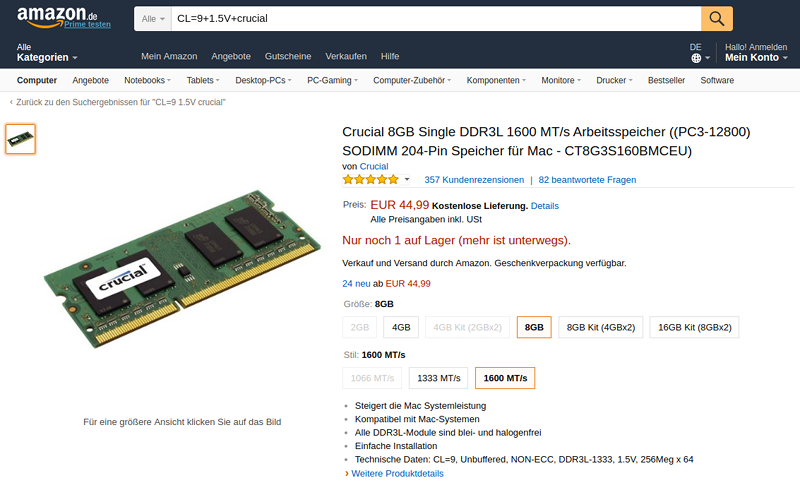In the past few weeks, my laptop suffered from very annoying random restarts. Randomly and to the point of preventing me to work correctly. After a bit of dusting out etc. I solved my problem by changing the 4GB memory module of my Lenovo X220 and putting a 2GB I had from another Lenovo. It worked. Good and bad. Good, it works, really bad, I cannot run anymore my virtual machine for my customers.
So, I had no choices but looking for RAM modules and I must say, I am not used to do it. From the documentation, I had to find the very special 1.5V CL=9 DDR3 1333MHz SODIMM and if possible from a good company like Crucial. On the website from Crucial, it offers the use of the low voltage 1.35V but on the website of Intel, the only supported voltage is 1.5V.
Anyway, I was lucky, on Amazon it was possible to order two 8GB 1.5V CL=9 DDR3 1333MHz SODIMM from Crucial.

Happy days until opening the box, the delivery was composed of two 8GB 1600MHz 1.35V CL=11 SODIMMs. So, I tried my luck, just putting one SODIMM and restarting the laptop. It worked!
Basically every body is contradicting everybody, be it on a discussion forum or any other place. The reason is simple, new low voltage RAM modules can run both at 1.35V and 1.5V. For the CL or CAS latency it looks like the system can adapt itself. I have no idea how, but the Crucial website tells me that I can use some CL=11 modules.
Now, I went from 4GB to 16GB in my laptop for less than 100€, with my first computer having 1MB of RAM, I am always surprised by the cost of electronics.
For the reference, the 8GB modules I bought are the CT8G3S160BMCEU.
Of course the question now is: Was it really the memory module or a simple bad contact or something like that which was solved when opening/closing the case of the laptop? I do not have the time to answer, but I will be able to test in the future by putting the 4GB module in place of the 2GB in my old laptop.

